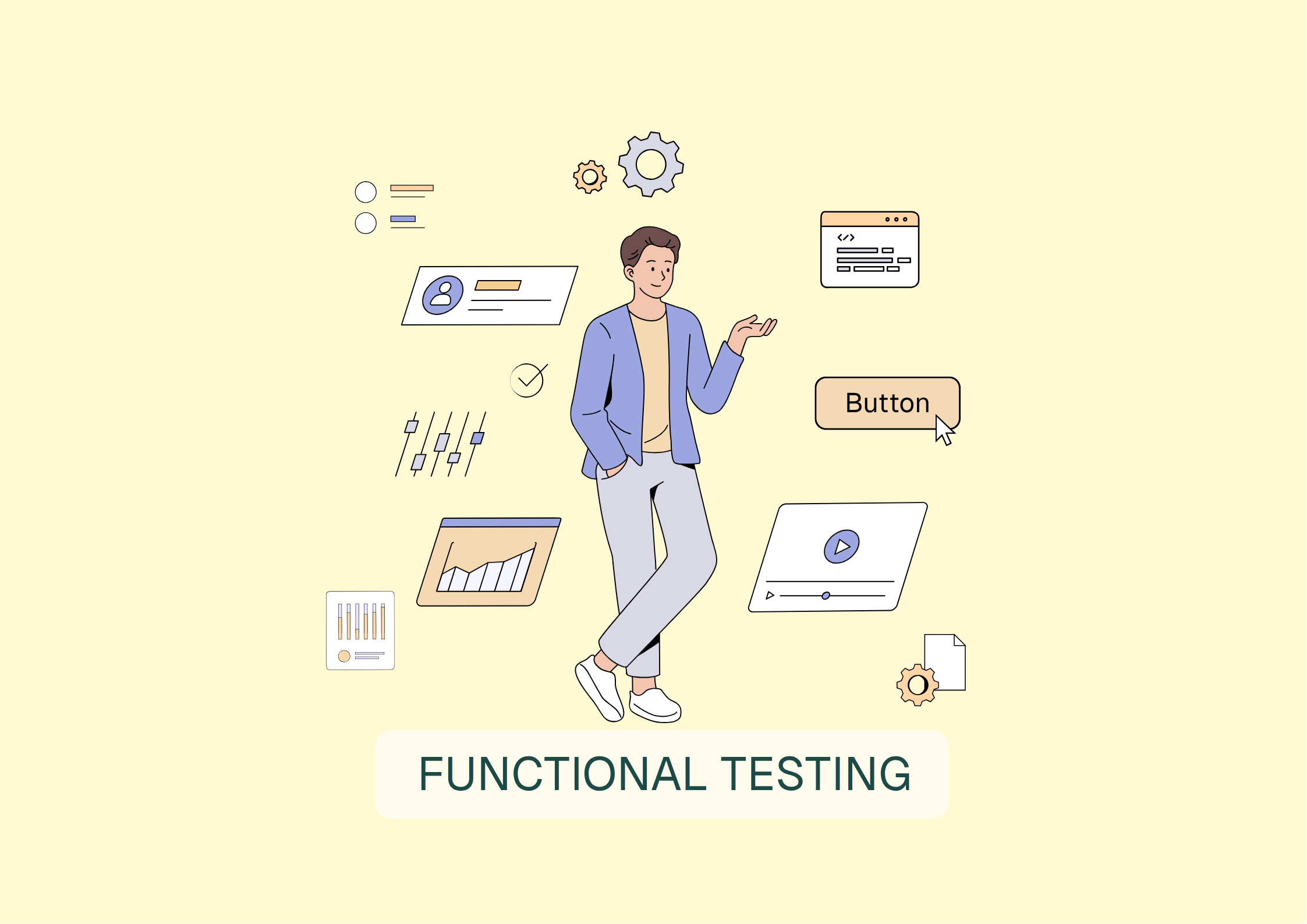CHANNELS
Features

Ensuring the quality of a digital product or service is an essential step. Functional testing plays a major role in this process, as it guarantees that every feature, whether it be an application, a website or a digital journey, meets user expectations. At a time when systems are becoming increasingly complex and the experience must be smooth and flawless, functional testing has become a central pillar of quality assurance.
Summary
1.
Definition of functional testing
2.
Examples of Functional Tests
3.
Objectives and challenges
4.
Functional testing methodology
5.
Functional test automation
6.
Best Practices for Functional Testing
7.
Functional testing: a strategic asset for your web projects
8
9.
10.
Functional testing is a method of verifying that a digital product meets the business requirements defined upstream. Unlike non-functional testing, which focuses on aspects such as performance, security, and resilience, functional testing focuses solely on the results expected by the end user. Rather than validating the code itself, this black-box approach ensures that the software delivers the expected user experience in real-world scenarios.
They are often based on common real-world usage scenarios. These tests may involve verifying that a user can log in with valid credentials, ensuring that a payment is declined when a credit card is invalid, or confirming that data entered into a form is correctly stored in a database. In the context of an e-commerce website, they can cover the entire customer journey, from adding a product to the cart to confirming the order. Such tests accurately reproduce real user journeys and help maintain a reliable digital experience.
A first example of a functional test is the validation of the login process. It consists of verifying that access is granted with correct credentials and denied with incorrect information. This ensures both the security and usability of the application.
Another common case concerns payments. The test must confirm that an invalid card number generates a clear error message, while a valid transaction is correctly processed and recorded.
Since forms are ubiquitous, a functional test can verify that data entered into a field, such as “Add a new record,” is properly saved and remains available in the database afterward.
In e-commerce, functional tests cover the entire customer journey. They may include adding a product to the cart, confirming an order, processing a secure payment, and receiving a confirmation email.
Finally, a concrete example is the validation of messages displayed to users. When an action fails, such as a declined payment, the functional test must confirm that the user receives a clear notification explaining the problem.

The main objective of functional testing is to verify that the application's actual behavior complies with business requirements. It enables critical anomalies to be identified quickly, reduces the costs associated with late corrections and, above all, improves the user experience. By validating each feature, functional testing helps to boost user confidence and ensure the overall quality of the delivered product.
Implementation generally follows several key steps. First, it is essential to identify the objectives and target the priority features to be tested. Next, test scenarios must be written to describe the different ways in which a feature can be used. These scenarios rely on data sets that simulate real-world conditions.
The next step is to run the tests, either manually or using automation tools, and then compare the actual results with the expected ones. Finally, each detected issue must be documented, fixed, and retested before the functionality is fully validated.
While manual testing remains necessary in certain cases, functional test automation has become essential for most projects. The tools interact with the user interface just as a human would, entering data, clicking buttons, or selecting elements. Advances in artificial intelligence have further enhanced these capabilities, allowing solutions to visually recognize interface components and automatically adapt scenarios when the interface changes.
With a platform like kapptivate, scenario creation is simplified thanks to a low-code approach that makes testing accessible to both technical teams and business users. Tests can be stored and versioned, making it easier for teams to collaborate effectively. Another major advantage is that scenarios are not only executed in simulated environments but also on real devices under real-world conditions, which enhances the reliability of results.
The generated reports are highly detailed, they specify the execution context (operating system, browser, screen resolution), describe any detected errors, and include both screenshots and video recordings of the session to help identify the root cause of issues faster.
Successful functional testing relies on several best practices. It is recommended to define test scenarios as early as possible in the project to anticipate needs and ensure better traceability. Automation should be implemented whenever scenarios become repetitive or business-critical to improve efficiency.
Testers should also adopt the end-user’s perspective, putting themselves in their place to identify usability issues. Finally, it is essential to prioritize testing on the most strategic features to optimize both time and available resources.
Functional testing is essential for ensuring the quality of a website or web application. It allows you to verify that each user journey works as intended. Using solutions such as kapptivate, teams can create and execute their scenarios in a simple, collaborative manner and under real conditions on different browsers and devices.
This approach not only ensures the reliability of critical paths, but also helps to improve the user experience and reduce risks before going live. Thanks to detailed and visual results, anomalies are detected and corrected more quickly, enabling the delivery of more efficient and reliable websites.
